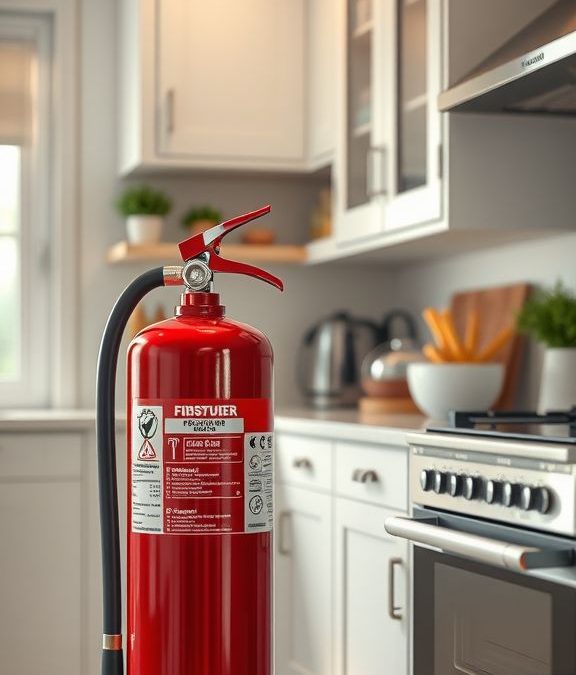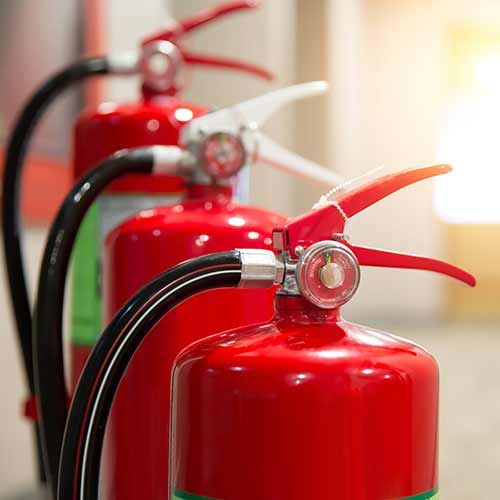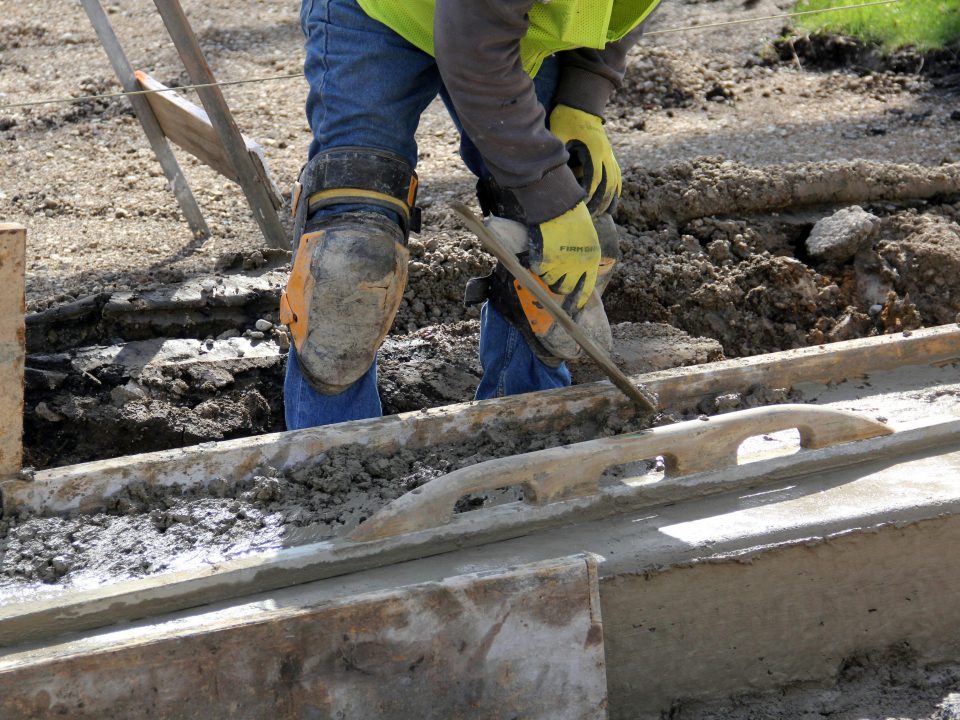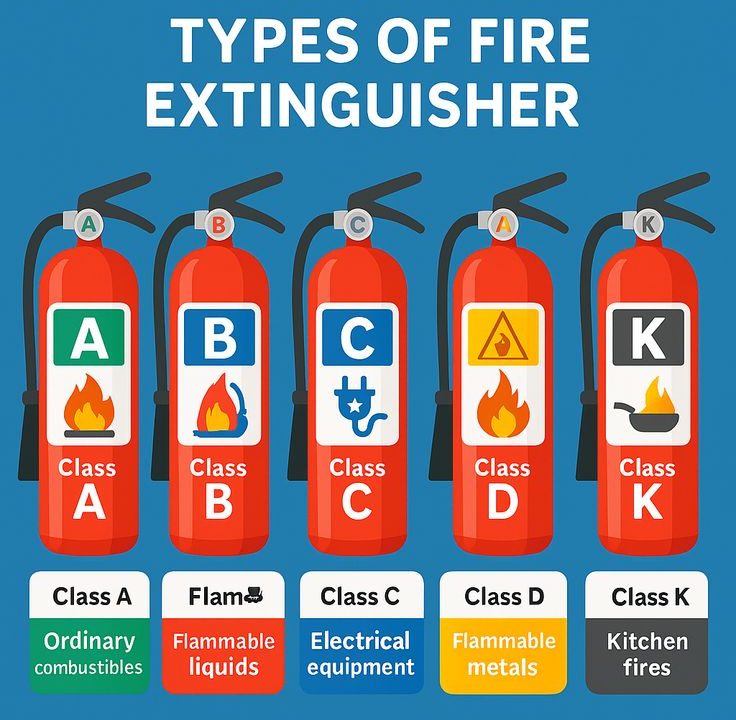How Often Should You Inspect Your Fire Extinguisher? Key Maintenance Tips

Understanding Different Types of Fire Extinguishers & Their Uses
October 1, 2025
The Complete Guide to Leg Protection in Workplace Safety: Types, Standards, Selection, and Best Practices
December 2, 2025You have purchased a fire extinguisher. You had stashed it in the kitchen, the garage or the corner of the office, and you felt somewhat safer. Well, tell the truth, when did you last see it? The greatest problem is that it does not have an extinguisher; it is the illusion of stability that it provides to you.
What happens when you come to the point of necessity and you reach the time you so badly need it, you take it, pull out the pin, squeeze the handle, and nothing happens? Only a sad little puff of dust.
Preventing that nightmare scenario is easier than you think. It all comes down to a few simple checks that turn your extinguisher from a red decoration into a reliable lifesaver. Whether it’s a compact 1kg dry powder fire extinguisher under the sink or a larger unit protecting your business.
Key Takeaways
- Your 60-Second Monthly Check: You need to look at it every month.
- The Annual Pro Check-Up: Once a year, someone with training needs to inspect it.
- The needle on the pressure gauge must be in the green.
- That little tag hanging off the handle is its health record. It tells you when it was last checked by a professional.
Prevent Disasters When Every Second Counts
Why is regular fire extinguisher maintenance important? Because in a real fire, you don’t have time to hope. You need to know. Regular checks solve these critical problems before they happen:
- The “Empty Can” Problem: An extinguisher can slowly lose pressure over time from a tiny, invisible leak.
- The Oops, It Broke Problem: The extinguisher can be rendered useless by damage caused by being knocked over, rust caused by a wet climate, or even a lost pin. You must identify these problems at an early stage.
- The Legal Problem (for Businesses): For business owners, especially those managing fire extinguishers in Sri Lanka, skipping inspections isn’t just risky; it’s a compliance issue that can lead to serious penalties.
When and How To Do The Right Inspection
How often should fire extinguishers be inspected? Here’s what should be done:
Part 1: Your Monthly Visual Check
The most frequently asked one is, Can I check my fire extinguisher myself? No, and you must, no doubt! At the end of each month, take one minute and complete this basic checklist. What are the most important steps of the fire extinguisher inspection? And can you get to it, and is it there?
- The first issue is the absence of an extinguisher or a plugged extinguisher. Ensure that it is in its place and that it is not concealed by a pile of boxes.
- Does it look okay? Check for external signs of distress such as dents, rust, leakages, or a burst hose. A damaged cylinder is a hazardous cylinder.
- Is the pin and seal intact? The pin prevents the inadvertent activation of the pin. The tiny plastic label indicates that it has not been interfered with by anybody. In case the seal has been broken or the pin is missing, then have it serviced.
Part 2: The Annual Professional Maintenance
Your monthly check is great for the obvious stuff, but what about problems you can’t see? That’s where a professional comes in.
A professional should thorough maintenance check on all your fire extinguisher equipment at least once a year.
“I Found a Problem in My Fire Extinguisher… Now What?”
This is the place where individuals often panic. So, what will be done in case of failure in the inspection of a fire extinguisher?
First, don’t panic. It is good to find an issue during an inspection because it signifies that you have identified it before its occurrence in a crisis. In the case of low pressure, broken seal, or damage, the unit should be taken to a professional fire safety company to be serviced, recharged, or replaced. Do not try to fix it yourself.
Conclusion:
That wall-fire extinguisher of yours should not be the matter of doubt. Spend one minute every month and one professional check once a year, and you resolve the number one issue, the issue of fear that it will not work. The presence of a working fire extinguisher is not a piece of metal, but it is an assurance. It’s control. It is having the confidence that you have the right weapon to defend what is important.
And in case your check-up shows that your present unit is not a new one, is not in good condition, or cannot be recharged, then changing it is the last step to complete peace of mind. Ensuring you have a reliable and effective model, like a versatile 1kg dry powder fire extinguisher, is what turns that worry into a solid, actionable safety plan for your home or vehicle.
Frequently Asked Questions (FAQs)
1. How long is a fire extinguisher good for?
The average lifespan of a fire extinguisher is 10-12 years. The stamped date of manufacture is on the cylinder. Although it may look great and the gauge is green, it is then supposed to undergo a professional hydrostatic test or a replacement after this time.
2. I have a dry powder extinguisher. Do I need to do anything special?
Yes. To resolve the issue of the powder inside settling and clumping, one should invert it and shake hard or tap it with a rubber mallet once a month when inspecting it. This holds the powder in suspension, and that is loosely available to discharge.
3. I used my extinguisher for just a second on a small fire. Can I put it back?
No. It is a widespread and harmful fallacy. As soon as you crack the seal and make use of an extinguisher, even momentarily, it will start losing its pressure. To be dependable, it has to be professionally replenished right away.
4. I’m worried I’ll put my extinguisher in the wrong place. Where’s the best spot?
The most suitable is close to an exit route and nearest to the location where the fire is most likely to begin (such as a kitchen or a workshop). The trick here lies in being able to take it with you as you head to safety, where you have the choice to either fight the fire or run away. Always keep it well away from a hazard (such as up next to the cooking stove) so that a fire will not be able to reach it.




